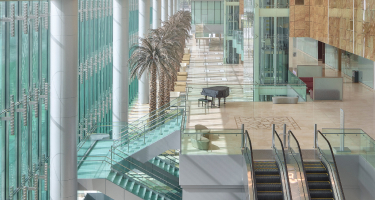What is an endoscopy?
An endoscopy is a non-surgical, minimally invasive procedure done to look at structures inside the body up close. During the procedure, a specialist will insert a long, thin tube (endoscope) inside your body. Endoscopes usually have a light and camera at the end. Some endoscopes have channels inside them that allow operating instruments to be inserted into. These can be used to perform surgery or remove tissue during the procedure.
The endoscope captures images or videos of inside the body which are displayed on a screen. Endoscopy is a quick and safe procedure that helps in diagnosing, treating, and preventing a wide range of conditions
What are the different types of endoscopy?
Although there are many types of endoscopy, they all work in the same basic way. The scope is gently inserted into an opening in the body or through a small incision. Differences include the task they are performing, whether they are rigid or flexible or whether they have channels inside. Other differences include:
- Type of scope: The name of the endoscope often reflects the organ that is being looked at. For example, a colonoscope is used to look inside the colon.
- Procedure name: Again, this usually reflects the organ being examined. For example, a colonoscopy is the endoscopy procedures looking at the colon.
Different types of endoscopies include:
- Anoscopy: Through the anus to look at the anus and rectum.
- Arthroscopy: Through an incision near the joints to look for conditions like arthritis.
- Bronchoscopy: Through the mouth or nostril to look at the lungs and trachea.
- Capsule endoscopy: Instead of a scope, a small capsule is swallowed which has a camera inside. As it travels though the body, it can capture pictures of a number of organs.
- Colonoscopy: Through the anus to look at colon.
- Cystoscopy: Through the to look at the bladder.
- Enteroscopy: Through the mouth for upper enteroscopy or the anus for lower enteroscopy.
- Esophagogastroduodenoscopy (EGD) or upper endoscopy: Through the mouth to look at the esophagus, stomach and small intestine.
- Hysteroscopy: Through the vagina to look at the uterus.
- Laparoscopy: Through an incision in the abdomen to look at abdominal and reproductive organs.
- Laryngoscopy: Through the mouth or nostril to look at the voice larynx.
- Mediastinoscopy: Through an incision near the breast bone to look at the area between the lungs (called the mediastinum which includes the heart, esophagus and windpipe.
- Neuroendoscopy: Through an incision in the skull to look at the brain.
- Proctoscopy: also called a rigid sigmoidoscopy, the scope is inserted through the anus to look at the anus and rectum.
- Sigmoidoscopy: Also called a flexible sigmoidoscopy, the scope goes through the anus to look at the lower part of the colon and rectum.
- Thoracoscopy: Also called pleuroscopy, the scope is inserted through an incision in the chest to look at the lungs and surrounding areas (such as the diaphragm, esophagus and chest wall).
- Ureteroscopy: Through the urethra to look at the tubes connecting the kidneys to the bladder.
When is endoscopy used?
An endoscopy is used for a number of reasons, including screening for, diagnosing, preventing and treating diseases. Endoscopy is also an important tool in catching many conditions early, when they are easier to treat.
A colonoscopy, for example, is used to screen for colon cancer. It allows doctors to identify any abnormal tissue or polyps (growths in the colon that may become cancerous) and test them via a biopsy. By identifying abnormalities before other symptoms appear, colonoscopy screening can help to detect precancerous conditions or cancer early.
Which conditions can an endoscopy detect?
Endoscopy procedures are used to detect diseases affecting the:
- Digestive system: This includes gastrointestinal disorders, colon polyps and colon cancer.
- Head and neck: This includes swallowing and reflux disorders and laryngitis.
- Joints: Including tears, arthritis dislocations.
- Nervous system: Including brain tumors.
- Respiratory system: This includes infections and diseases of the lungs.
- Urinary tract: This includes kidney stones and urinary tract infections (UTIs).
- Reproductive system: This includes endometriosis, abnormal uterine bleeding and fertility issues.
Which treatments can an endoscopy perform?
Endoscopes with instruments can be used to:
- Seal wounds
- Drain fluid
- Fix blockages
- Inject medicine
- Perform surgeries.
- Place stents
- Remove tumors or damaged tissue
- Stop internal bleeding
- Widen organs which are too narrow.
Thanks to innovations in endoscopic technology, endoscopy offers a highly accurate diagnostic and advanced therapeutic option for a wide range of diseases.
© Copyright 2025 Cleveland Clinic Abu Dhabi. All rights reserved.
This page has been reviewed by a medical professional from Cleveland Clinic Abu Dhabi. Information on this page is not intended to replace the medical advice of your doctor or health care provider. Please consult your health care provider for advice about a specific medical condition.
Learn more about our editorial process here.

